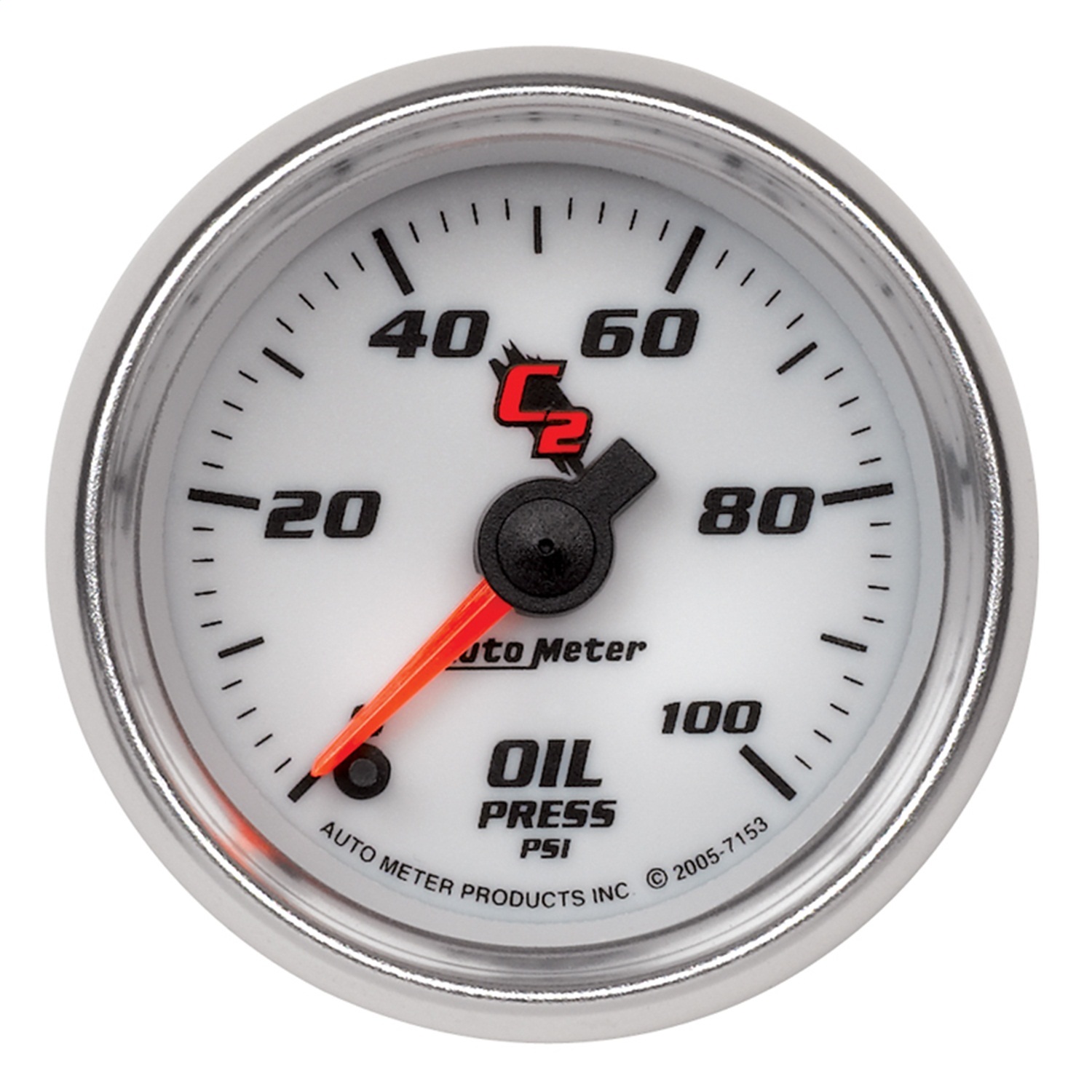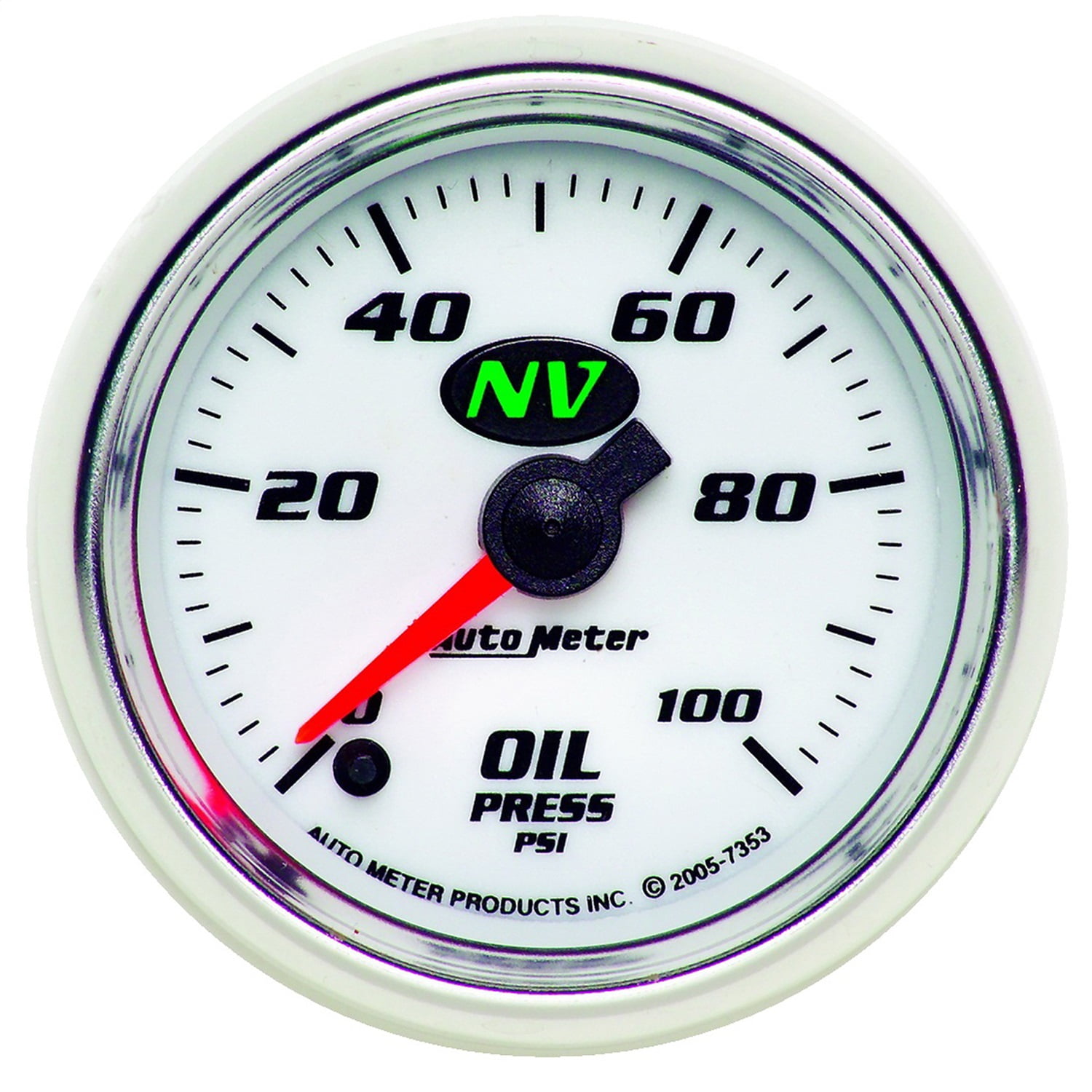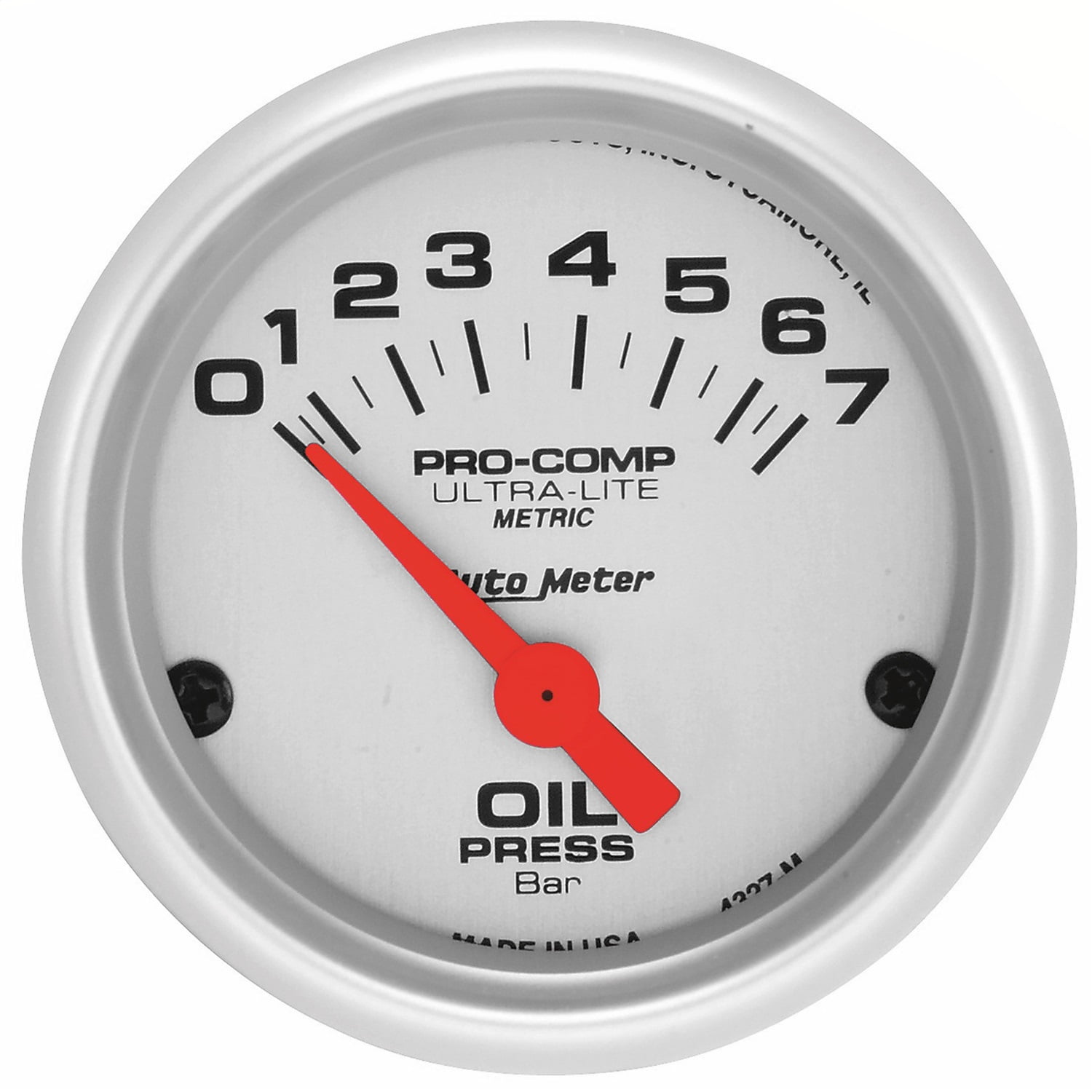Electric oil pressure gauges offer a precise and reliable method of monitoring oil pressure in various applications. Compared to mechanical gauges, they provide enhanced accuracy, durability, and versatility, making them an indispensable tool for ensuring optimal engine performance.
This comprehensive guide delves into the world of electric oil pressure gauges, exploring their types, installation, troubleshooting, maintenance, and diverse applications. By understanding the intricacies of these gauges, you can effectively monitor oil pressure and safeguard your equipment.
Introduction

An electric oil pressure gauge is a device that measures the oil pressure in an engine. It is an important part of the engine’s monitoring system, as it provides information about the health of the engine and can help to prevent damage.
Electric oil pressure gauges are more accurate and reliable than mechanical gauges, and they are also easier to install. However, they are also more expensive than mechanical gauges.
Advantages of Electric Oil Pressure Gauges
- More accurate and reliable than mechanical gauges
- Easier to install
- Can be used in a wider range of applications
Disadvantages of Electric Oil Pressure Gauges
- More expensive than mechanical gauges
- Can be more difficult to troubleshoot
Types of Electric Oil Pressure Gauges
Electric oil pressure gauges are essential tools for monitoring the health of your engine. They provide accurate and real-time readings of the oil pressure, allowing you to detect any potential issues early on. There are several types of electric oil pressure gauges available, each with its own unique features and benefits.
Analog Gauges
Analog gauges are the most traditional type of oil pressure gauge. They use a needle to indicate the oil pressure on a graduated scale. Analog gauges are relatively inexpensive and easy to install. However, they can be less accurate than digital gauges, especially at low oil pressures.
Digital Gauges
Digital gauges use a digital display to indicate the oil pressure. They are more accurate than analog gauges, especially at low oil pressures. Digital gauges also typically offer more features, such as programmable alarms and data logging.
Wireless Gauges, Electric oil pressure gauge
Wireless gauges are a newer type of oil pressure gauge that transmits data wirelessly to a receiver. This allows you to monitor the oil pressure from anywhere within range of the receiver. Wireless gauges are more expensive than analog or digital gauges, but they offer the convenience of being able to monitor the oil pressure without having to be connected to the vehicle.
Installation and Wiring

Installing and wiring an electric oil pressure gauge is a relatively straightforward process that can be completed in a few steps. By following the instructions carefully and using the provided diagrams, you can ensure a secure and accurate installation.
Before you begin, gather the necessary tools and materials, including the electric oil pressure gauge, sender unit, wiring harness, and any necessary adapters or fittings.
Wiring the Gauge
The first step is to wire the gauge. Connect the positive (+) terminal of the gauge to the power source, typically the ignition switch. The negative (-) terminal of the gauge should be connected to ground.
Next, connect the sender unit to the gauge. The sender unit typically has two terminals: one for the signal wire and one for the ground wire. Connect the signal wire from the sender unit to the corresponding terminal on the gauge.
Connect the ground wire from the sender unit to a suitable ground point on the engine.
Mounting the Gauge
Once the gauge is wired, it can be mounted in a convenient location on the dashboard. Use the provided mounting bracket and hardware to secure the gauge in place.
Finally, connect the wiring harness to the gauge and sender unit. The wiring harness typically has color-coded wires that correspond to the terminals on the gauge and sender unit. Connect the wires according to the instructions provided in the user manual.
Once the installation is complete, test the gauge by turning on the ignition switch. The gauge should display the current oil pressure.
Troubleshooting
If the gauge does not display the correct oil pressure, there may be a problem with the installation or wiring. Check the following:
- Make sure that the sender unit is properly installed and tightened.
- Check the wiring connections to ensure that they are secure and correct.
- Test the gauge by connecting it directly to a power source and ground.
If you are still having problems, consult the user manual or contact the manufacturer for assistance.
Troubleshooting
Ensuring the accurate and reliable operation of electric oil pressure gauges is crucial for maintaining optimal engine performance. Troubleshooting common problems can help identify and resolve malfunctions promptly, ensuring the gauge provides accurate readings and alerts drivers to potential engine issues.
Diagnosing and repairing gauge malfunctions involves a systematic approach, considering various factors that could affect the gauge’s performance. Understanding the potential causes and solutions empowers individuals to address these issues effectively, ensuring the gauge operates optimally and provides reliable information about the engine’s oil pressure.
Identifying Common Problems
Electric oil pressure gauges may encounter various issues that can affect their accuracy and functionality. Common problems include:
- Gauge Malfunction:The gauge may fail to display readings or provide inaccurate measurements.
- Wiring Issues:Loose connections, damaged wires, or faulty wiring can disrupt the signal transmission between the sensor and the gauge.
- Sensor Problems:A faulty oil pressure sensor can provide incorrect readings or fail to detect changes in oil pressure.
- Electrical Interference:Electromagnetic interference from other electrical components can affect the gauge’s readings.
Maintenance and Calibration
Regular maintenance and calibration are crucial for ensuring the accuracy and reliability of electric oil pressure gauges. Proper care extends their lifespan and prevents false readings that could lead to costly repairs or safety hazards.
To maintain your electric oil pressure gauge, follow these steps:
- Inspect the gauge regularly:Check for any physical damage, loose connections, or corrosion.
- Clean the gauge:Use a soft cloth dampened with a mild cleaning solution to remove dirt or debris.
- Test the gauge:Apply a known pressure source to the gauge and compare the reading to a reference gauge or manufacturer’s specifications.
Calibration should be performed by a qualified technician using specialized equipment. The frequency of calibration depends on the manufacturer’s recommendations and the operating environment.
Calibration Procedure
- Disconnect the gauge:Remove the gauge from the engine and disconnect the electrical connections.
- Connect to a pressure source:Attach the gauge to a calibrated pressure source.
- Apply pressure:Gradually increase the pressure while monitoring the gauge reading.
- Adjust the gauge:If the gauge reading deviates from the pressure source, adjust the calibration screw on the gauge until the readings match.
- Repeat steps:Repeat steps 3-4 at multiple pressure points to ensure accuracy across the entire range.
Regular maintenance and calibration ensure your electric oil pressure gauge provides accurate and reliable readings, helping you monitor your engine’s health and prevent potential issues.
Applications
Electric oil pressure gauges find widespread applications in various industries and settings due to their accuracy, reliability, and ease of installation. They are commonly used in:
Automotive Industry
Electric oil pressure gauges are essential components in automotive engines, providing real-time monitoring of oil pressure. They alert drivers to any potential oil pressure issues, enabling timely maintenance and preventing engine damage. These gauges are often integrated into dashboards or installed as aftermarket accessories.
Industrial Machinery
Electric oil pressure gauges play a crucial role in monitoring oil pressure in industrial machinery, such as compressors, pumps, and turbines. They ensure that the equipment operates within safe pressure limits, reducing the risk of breakdowns and costly repairs. These gauges can be connected to alarm systems to trigger alerts in case of abnormal pressure readings.
Marine Applications
Electric oil pressure gauges are widely used in marine engines, providing critical information about oil pressure levels. They help ensure the smooth operation of engines, especially in harsh marine environments. These gauges are often mounted on dashboards or in engine rooms, allowing crew members to monitor oil pressure at all times.
Epilogue

Electric oil pressure gauges have revolutionized oil pressure monitoring, providing unparalleled accuracy, convenience, and versatility. Whether you’re a seasoned mechanic or a DIY enthusiast, understanding these gauges is crucial for maintaining optimal engine performance and preventing costly repairs.
FAQ Section
What are the advantages of using an electric oil pressure gauge over a mechanical gauge?
Electric oil pressure gauges offer higher accuracy, faster response time, and are less prone to mechanical failures compared to mechanical gauges.
How do I install an electric oil pressure gauge?
Refer to the manufacturer’s instructions for specific installation procedures. Generally, it involves connecting the gauge to the oil pressure port and wiring it to the vehicle’s electrical system.
What are some common troubleshooting tips for electric oil pressure gauges?
Check for loose connections, faulty wiring, or a damaged sensor. If the gauge is not displaying accurate readings, recalibration may be necessary.